Tunnel des lumières Suyanggae (단양 수양개빛터널)
17.3Km 2020-06-04
Chungcheongbuk-do, Danyang-gun, Jeokseong-myeon, Suyanggaeyujeok-ro 390
Construit durant l'occupation japonaise, le pont Suyanggae parcourt une distance de 200 mètres. Le tunnel fut laissé à l'abandon avant d'être transformé en un tunnel de lumières. L'installation propose des vidéos, des systèmes audios et LED pour une ambiance féérique et unique en son genre.
Falaises Sainam à Danyang (단양 사인암)
17.3Km 2024-12-13
Chungbuk Danyang-gun, Deagang-myeon, Sainam-ri 25
+82-43-422-1146
* Les falaises Sainam, mélange de vallées et de roches aux formes étranges *
Les falaises Sainam situées dans le district de Daegang-myeon sont constituées des roches Haseonam, Sangseonam, et Jungseonam. Elles constituent l’un des principaux sites touristiques de l’ouest de Danyang. D’une hauteur de 70 mètres, elles sont entourées par les rivières profondes du sud de Danyang.
La plupart des visiteurs à Danyang privilégient en premier lieu la visite de ce paysage. La vallée qui entoure ces falaises est dénommée Unseongu, et constitue le paysage le plus pittoresque de Danyang. Sur la paroi du rocher, vous trouverez des écrits notamment ‘celui qui ne craint rien même quand il est seul, alors celui-ci vivra jamais sans soucis’. Vous trouverez également des vieux pins tout autour des falaises.
* Origine du mot Sainam *
Les falaises ont été désignées Sainam par les savants confucianistes Yeokdong, et Utak durant la période Goryeo en Corée.
Sogang House
17.5Km 2021-04-09
22, Baraemi-gil, Bonghwa-eup, Bonghwa-gun, Gyeongsangbuk-do
+82-10-9189-5578
The House of Sogang is an approximately 110-year-old house located in the village of Baraemi in Bonghwa-gun, Gyeongsangbuk-do. It was originally built for and presented to Kim Chang-gi (pen-name: Sogang), a well-known local Confucian scholar who served as the head of the Dosanseowon Confucian Academy, and who happened to be the second son of Kim Roe-sik (pen-name: Namho), the great-grandfather of the current owner.
Furthermore, the House of Namho, which is situated behind the House of Sogang, was built for the first son of Kim Roe-sik, one of the richest men in the region, who borrowed money using his entire property as security and donated it to a war chest. He won an official commendation for his role in helping secure national independence in 1977.
The entire village pf Baraemi is composed of traditional square-shaped houses with tiled roofs set amid a clean and peaceful atmosphere, for which it was designated as a Traditional Cultural Village way back in 1922. The name of the village, Baraemi, implies that it was originally situated by the sea, and many shell remains have been found in paddy fields and puddles there over the last 60 years.
The House of Namho is a typical square-shaped house with a tiled roof, and comprises a tall gate, a front courtyard, a sarangchae (men’s quarters) with maru (wooden floor), an inner courtyard, and a bonchae (main building) among its various structures. The main construction material of the house is Chunyang pine wood, which is a rarely used these days. Thanks to the owner-family’s dedicated maintenance and care, the house has been preserved in good condition. As the typical residence of a nobleman of the late Joseon period, the house is decorated with simple interior objects including an old electric fan and a cabinet inlaid with mother-of-pearl.
The house has seven guestrooms in total: The sarangchae consists of the Keunsarang and Jakeunsarang, each with a capacity of 4 to 5 people, and the Araetbang with a capacity of 2 to 3 people. In summer, guests can rent the Jakeunsarang and Sarangdaecheong together, or the Araetbang and Marutbang together, in order to have more space.
In addition, the anchae has a sangbang with a capacity of 3 to 4 people, while the mugangchae consists of Mungangbang 1, which is a red clay floor-heated room, and Mungangbang 2, which can accommodate 2 to 5 people. In summer it is possible to rent the entire House of Sogang, which can accommodate anywhere from 22 to 34 people (if the Sarangmaru and Marutbang are also rented).
Guests of the Keunsarang and Jakeunsarang can use a communal refrigerator, and the entire building has Wi-Fi access. Clean bedding is also provided. Although the house doesn’t provide a breakfast, the owner offers guests sweetcorn, sweet potatoes, fruit, etc. The house is also equipped with a BBQ facility, so guests can enjoy a BBQ party in the evening.
Guests can easily reach various nearby cultural heritage sites, including Muryangsujeon Hall of Buseoksa Temple, Sosuseowon Confucian Academy, which was the first Confucian Academy of Korea, Ojeon Mineral Spring, Daksil Village, and Chukseosa Temple.
The Namho house [Korea Quality] / 남호구택 [한국관광 품질인증]
17.5Km 2020-09-03
21, Baraemi-gil, Bonghwa-gun, Gyeongsangbuk-do
+82-54-673-2257
Located in Bonghwa-eup, Bonghwa-gun, Gyeongsangbuk-do, Bonghwa Namho Gutaek is an old house from the Chosun period designated as Cultural Property Material No. 385. It was built by Nongsan Kim Nam Yeong in 1876 and his son Namho Kim Roe Sik had lived there. Mr. Kim Roe Sik was awarded with a medal for contributing his entire asset to military fund for the Provisional Government of Korea. The spirit of putting others and his country before himself continues until now. Having been built with high-quality materials, the 140-year old Namho Gutaek has barely suffered any deformation. In addition, attentive care added by the descendants has kept the traditional beauty of the hanok intact. One may even feel reverence at the Sosel Daemun (gate). In harmony with the hanok, the garden in the yard and the flower bed sitting next to the wall change color as season changes. It is a great place to feel the scent of old trees and get some rest. In 2016, the shared toilet was renovated in modern style to alleviate any inconvenience for the guests. In the spacious yard, there’s a spot for traditional games such as Tuho, Jegichagi, Neoltuigi, etc. Bonghwa Station (Yeongdong Line) is about a 15- minute walk away; an inner city bus stop in the town, on the other hand, makes a trip to other regions easy.
Seongmun (Porte de pierre) (석문)
17.6Km 2024-12-17
644-13, Sambong-ro, Maepo-eup, Danyang-gun, Chungcheongbuk-do
+82-43-422-1146
Deux cents mètres en amont du Pic Dodamsambong, à gauche de la rivière, se trouve une grande porte de pierre en forme d’arc. Cette arche de pierre à la forme étrange s’appelle Seongmun. Au milieu de paysages fascinants, Seongmun est la deuxième des Huit merveilles de Danyang.
À l'intérieur d’une petite grotte se situant à gauche de la porte, se trouve l’Okdap (Stèle des Champs), qui est censée avoir été utilisée par une vieille enchanteresse. La légende d’Okdap raconte qu’une enchanteresse qui vivait dans le ciel, un jour descendit sur terre pour obtenir de l'eau et laissa tomber son épingle à cheveux, tout près de la porte de pierre. Subjuguée par les beaux paysages, elle abandonna le ciel pour vivre près de la Porte de pierre comme une paysanne ordinaire pour le reste de sa vie.
Tohyang traditional house [Korea Quality] / 토향고택 [한국관광 품질인증]
17.6Km 2020-09-10
43, Baraemi 1-gil Bonghwa-eup, Bonghwa-gun, Gyeongsangbuk-do
+82-10-8575-9036
This historic house has been the home of the descendants of Kim Yeo-byeong, one of the tenth-generation ancestors of its current occupants. Kim Yeo-byeong was born as the fourth son of Kim Seong-gu (courtesy name: Oheon, 1641-1707), founder of Uiseong Kim's Clan at Baraemi Village in Bonghwa and who was a great-great-great grandson of eminent Neo-Confucian official-scholar Kim U-goeng (courtesy name: Gaeam, 1524-1590). The house is comparatively large, featuring a square layout with a lofty five-bay gate building (soseuldaemun) and the main house of seven bays. The main building (anchae) of the house, located against the backdrop of a pine hill, is believed to have been built over 400 years ago before the founder of the family arrived at the village. The family guesthouse (sarangchae) was renovated in 1876 by Kim In-sik (courtesy name: Amun, 1855-1910), who served as the caretaker (Chambong) of Sunghyejeon Shrine, and Grand Master Tonghun before founding Joyang School, which would later become the present-day Bonghwa Elementary School. The name of the house, Tohyang, came from the courtesy name of Kim Jung-uk (1924-1967), a grandson of Kim In-sik. The latter was conscripted by the colonial authority ruling Korea at the time to serve the Japanese puppet state Manchukuo but fled during a military drill to become a freedom activist fighting against Imperial Japan in the Chinese cities of Suzhou and Hangzhou. He returned home after the 1945 Korean Liberation and studied in Jungang High School and Korea University before serving as a budget officer at the Economic Planning Board. The name of the house inscribed on the plaque hung under the roof of the gatehouse was written by his son Kim Jong-gu in honor of his life and achievements. At the front courtyard of the house is a lotus pond including barbecuing equipment and pottery kiln. In the rear garden is a folk playground with facilities and equipment for swinging, traditional Korean seesaw, shuttlecock-kicking, pitch-pot, and top spinning. The front courtyard also features rustic ceramic pots and rooftiles bearing poetic passages written by the mistress of the house who is a prize-winning poetess. The house provides visitors with an opportunity to experience traditional Korean cultural heritage such as pottery, calligraphy, poetry, and traditional musical instruments. Rich with the heritage of traditional Korean culture and lifestyle, the Historic House of Tohyang guides visitors to refreshment and healing obtained from the legacy of the peaceful rural life of days gone by.
Manhoegotaek [Korea Quality] / 만회고택 [한국관광 품질인증]
17.6Km 2020-09-08
51, Baraemi 1-gil, Bonghwa-eup, Bonghwa-gun, Gyeongsangbuk-do
+82-54-673-7939, +82-10-7424-7280
Manhoe Historic House is located in the village of Baraemi, whose name means “a village under the sea.” As a place where literary and intellectual endeavors have flourished since ancient times, Manhoe Historic House’s representative structure is Myeongwolu Pavilion, where ancestors studied and recited poetry amid the beautiful landscape of Sobaeksan Mountain. It is said that about 1,000 poems were composed at the pavilion in the old days.
The house is also the birthplace of the independence movement in Korea. Local Confucian scholars led by Independence activist Kim Chang-suk gathered together at the pavilion right after the March 1st Movement in 1919 and wrote the petition for Korea’s Independence, which was eventually submitted to the Paris Peace Conference. Recently, many hundreds of letters exchanged between independence activists were also discovered at the house.
The house is a square-shaped hanok structure consisting of a ‘ㄷ’-shaped anchae (women’s quarters), a ‘ㅡ’-shaped sarangchae (men’s quarters), a jungmunganchae (middle gate building), and a courtyard. The anchae, which is over 320 years old, has been inhabited by the descendants of Kim Geon-su, a civil official of the late Joseon period, for six generations, The sarangchae, which is over 200 years old, was added to the original house at a later date.
The house was mainly built with red and solid Chunyang pine wood, and is well preserved as a result. The sarangchae has a half-hipped roof, and comprises a sarangbang (main room), daecheong (main floored room), geonneonbang (a room opposite the main room), and toenmaru (a narrow wooden porch running along the outside of the building). The guestrooms of the sarangchae and jungmunganchae include the Sarangbang, Seonangsil, and Baraemisil Rooms, of which the Sarangbang and Seonangsil are equipped with an individual indoor bathroom.
In particular, the anchae is a cozy well-insulated building comprising a daecheong in the middle, a sangbang room on the left, and a gobang (storeroom) and anbang (main room) on the right.
Every room of the anchae is decorated with paintings by the owner’s daughter, fabric artworks, and antique wooden furniture. The anbang, which has an attic and indoor bathroom, can accommodate up to eight people. Guests of the sangbang and gobang need to use the external bathroom.
Right next to the house is a farm covering an area of 6,600m2 where over 100 kinds of crops are cultivated organically, including wildflowers, sweet potatoes, tomatoes, corns, peanuts, salad leaves and other vegetables, which are available for guests. Although the house doesn’t provide a breakfast, guests can pick vegetables in the field and cook them in the communal kitchen or at the BBQ facility in the outer yard. Meanwhile, the nearby Songyigukbapjip restaurant specializes in the delicious local dish made with pine mushrooms.
The house provides a variety of traditional experience activities including Tuho (stick throwing), Seunggyeongdo (chess), Neolttwigi (Korean jumping game similar to see-saw), Sijo composition (traditional Korean three-verse poem), a traditional musical instrument experience (six-stringed Korean zither, seven-stringed instrument, gong, etc.), and a woodblock printing experience.
Danyang Jeokseong (단양 적성)
18.2Km 2023-04-12
Chungbuk, Danyang-gun, Danseong-myeon, Habang-ri
+82-43-422-1146
* Les remparts Jeokseong, lieu stratégique lors de la période des trois royaumes en Corée *
Les remparts de Jeokseong constituent une forteresse de montagne située à Danyang, sur le mont Seongjae. Si les alentours de la forteresse ont été détruit sur un perimétre d’1 km, la partie nord de la forteresse est en partie restée intacte. La forteresse Jeokseong a été classée le 1er août 1979 au patrimoine historique de la Corée.
La forteresse a une circonférence de 923 mètres même si la majeure partie de la forteresse est à l’état de vestige. Elle est connue également pour avoir été le lieu de bataille entre le royaume Goguryeo et le royaume Silla, ce dernier prenant finalement le contrôle de la région.
Musée de la peinture folklorique de Joseon
18.3Km 2019-04-03
432-10 Kimsakkat-ro, Kimsakkat-myeon, Yeongwol-gun, Gangwon-do
+82-33-375-6100
Le musée de la peinture folklorique de Joseon est situé à Waseok-ri, Kimsakkat-myeon, Yeongwol-gun dans la province du Gangwon-do. Les travaux ont commencé en 1998, et le musée a été inauguré le 29 juillet 2000. Il renferme quelques 3 000 peintures folkloriques de l’époque Joseon. Il propose également un espace d’activité où les visiteurs peuvent réaliser leurs propres peintures folkloriques, ainsi qu’une galerie de peintures érotiques accessible uniquement aux adultes.
Le musée est ouvert de 10h à 17h en période d’hiver (de novembre à février) et de 9h à 18h en période d’été (de mars à octobre). Après avoir fait le tour du musée de la peinture folklorique, profitez de votre visite à Kimsakkat-myeon pour jeter un coup d’oeil sur le centre culturel Kim Sakkat et le musée artistique de l’Inde.
Vallée Seokcheon (석천계곡)
19.1Km 2021-05-17
Samgye-ri, Bonghwa-eup, Bonghwa-gun, Gyeongsangbuk-do
+82-54-679-6334
La vallée Seokcheon recoit les eaux en provenance de la montagne Taebaek, située à Bonghwa-gun dans la province de Gyeongsangbuk-do. La vallée est large, peu profonde, et entourée d'épaisses forêts de pins. Des rochers plats sont dispersées à travers la vallée, ce qui fait endroit idéal pour jouer avec les enfants. A côté de la vallée, vous trouverez également le pavillon Seokcheonjeong, qui fut construit en 1535 (période de Joseon). Ce pavillon est fait de pins rouges appelés Chunyangmok et construit sur un socle en pierre ; il offre une vue panoramique magnifique sur la montagne.

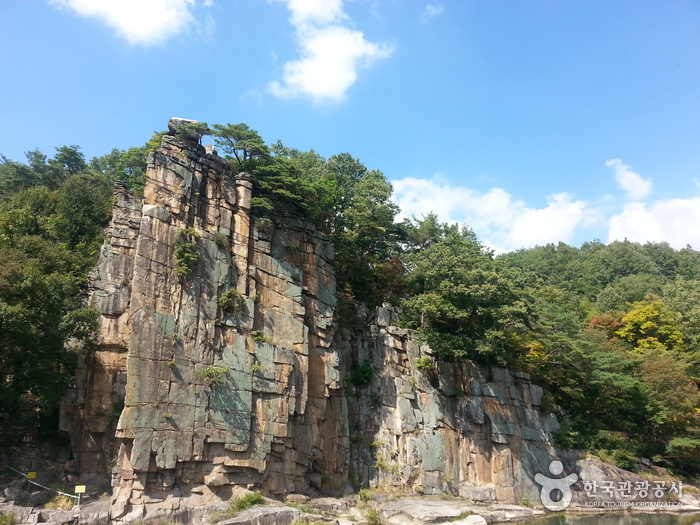
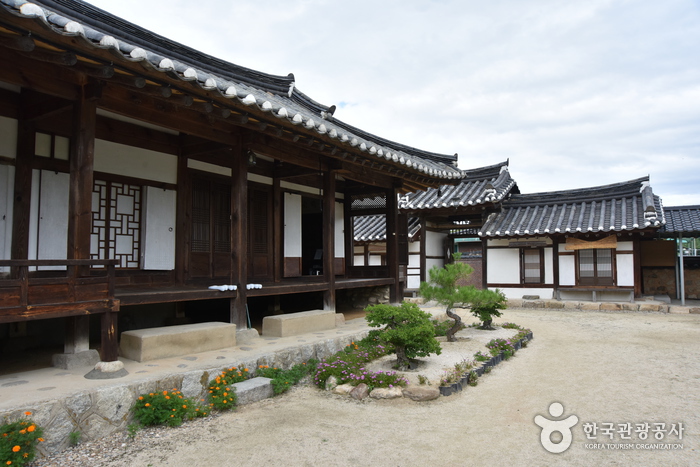
![The Namho house [Korea Quality] / 남호구택 [한국관광 품질인증]](http://tong.visitkorea.or.kr/cms/resource/90/2626090_image2_1.jpg)
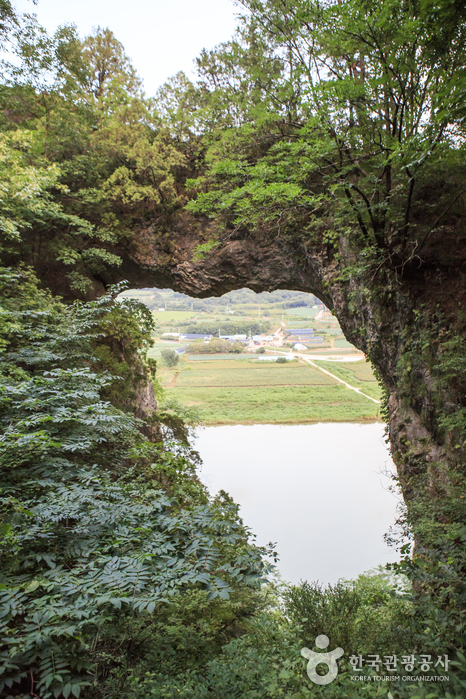
![Tohyang traditional house [Korea Quality] / 토향고택 [한국관광 품질인증]](http://tong.visitkorea.or.kr/cms/resource/57/2627457_image2_1.jpg)
![Manhoegotaek [Korea Quality] / 만회고택 [한국관광 품질인증]](http://tong.visitkorea.or.kr/cms/resource/64/2579364_image2_1.jpg)
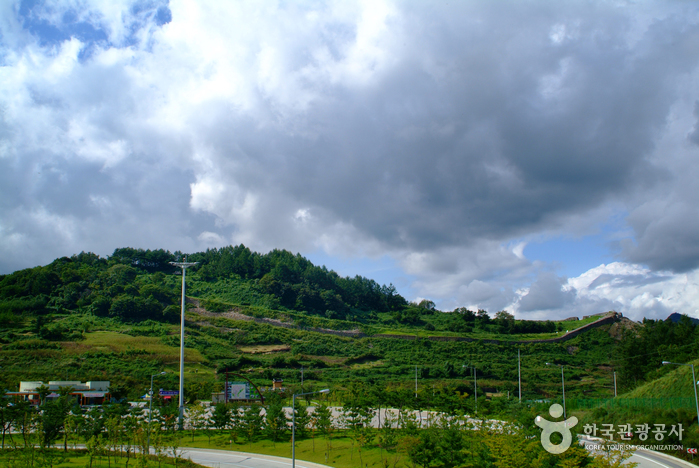
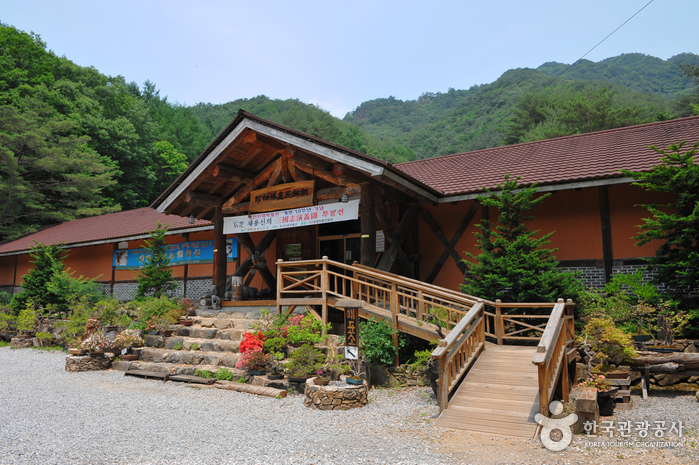
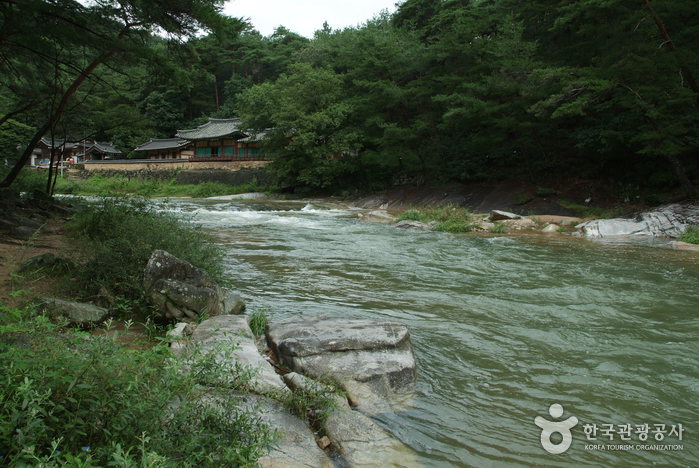
 Français
Français
 한국어
한국어 English
English 日本語
日本語 中文(简体)
中文(简体) Deutsch
Deutsch Español
Español Русский
Русский